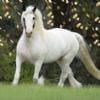Lameness in poultry
Forum. Lameness
Arthritis is very important if the chicken cannot stand or walk, it will not eat or drink.
Besides, there are many pathogens that affects the joints:
1- Mycoplasma synovia:
In flocks affected by MS there are mild to unnoticed respiratory symptoms and arthritis, the respiratory symptoms will be obvious after applying the live vaccine of ND or IB. Especially in the hock joints, (unilateral or bilateral) creamy exudates, the tendons may involve (tendonitis) and erosions on the joints surfaces. This signs can be seen in the acute disease but in the chronic disease we can see orange exudates in the hock joint.These signs could also be seen in all bodys joints and sternal bursa.
2- Staphylococcosis:
They are more spreading cases in the parent stocks, the lameness and reluctance to stand in these cases because of:
a- Osteomyelitis: Osteomyelitis in bone consists of focal yellow areas of caseous exudates or lytic areas, which affects bones and turns them fragile, the femoral head often separates from the shaft by a fracture through the neck when the coxo-femoral joint is disarticulated (femoral head necrosis).
b- Spondylitis, involving articulating thoracolumbar vertebrae, may cause lameness indirectly because of the impingement on the spinal cord.
c- Plantar abscess is a common infection seen in mature chickens (“bumble foot”) an infection that leads to massive swelling of the foot and lameness.
d- Arthritis, peri-arthritis, and synovitis.
3- Pullorum Disease and Fowl Typhoid: these diseases have loads of symptoms and one of them is affection of joints. Swollen joints containing yellow viscous fluid (this cases occured in 2009 in Syria in the pre-mature egg layers hen), among the joints, the hock joint is most commonly involved, but other joints such as the wing joint and the foot pad may be affected.
4- Fowl Cholera: the fowl cholera happened by acute form (septicemia) or chronic form (localized) the localized infections may involve the hock joints footpads.
5- E.coli:
Localization of E. coli in bones and synovial tissues is a common sequel to coli septicemia.
Often multiple sites are involved. Bacteria colonize the vascular sprouts that invade the physis of a growing bone, provoking an inflammatory response that results in osteomyelitis. Transphyseal blood vessels in birds serve as a conduit for the process to spread into the joint and surrounding soft tissues. Bones most often affected are tibiotarsus, femur, thoracolumbar vertebra, and humerus. Hock, stifle, hip, and wing joints are sites where arthritis is most likely to occur. Lesions that develop in joint spaces of articulating thoracolumbar vertebrae cause spondylitis (spondylosis), which results in progressive paresis and paralysis. Tenosynovitis frequently accompanies arthritis.
6- Reovirus infection Viral Arthritis:
In naturally infected chickens, it is detected swellings of the digital flexor and metatarsal extensor tendons. The latter lesion is evident by palpation just above the hock and may be readily observed when feathers are removed. The hock usually contains a small amount of straw-colored or blood-tinted exudates in a few cases. There is a considerable amount of purulent exudates resembling that seen with infectious synovitis. Early in the infection, there is marked edema of the tarsal and metatarsal tendon sheaths.
Petechial hemorrhages are frequent in the synovial membranes above the hock.
Inflammation of tendon areas progresses to a chronic type lesion characterized by hardening and fusion of tendon sheaths. Small-pitted erosions develop in the articular cartilage of the distal tibiotarsus. These erosions enlarge, coalesce, and extend into underlying bone. An overgrowth of fibro-cartilaginous pannus develops on the articular surface. Condyles and epicondyles are frequently involved.
7- Spondylitis: etiology: enterococcus cecorum bacteria.
This case happens in the males of the broiler breeders at 6-10 weeks of age.
We can see the male set in its hock and tail with its feet and shank raised off the ground, these birds was discredited as birds with legs problems but there is not any problem in legs, the problem in the freely thoracic vertebra.In this location, we can see swollen of the bon, irregular arrangement of the ribs, and enlargement of the spine.
Carefully sagittal cut to thoracic vertebra column reveal the area of necrosis filled with caseous exudates in the fourth thoracic vertebra and in it will lead to deformity in the column vertebra due to compression of the spinal cord.
Loss of bone in vertebral bodies caused dorsal bucking of the spine (kyphosis) which due to compress the spinal cord.
If anyone has something to add, please post a comment
Thank you and best regards
















